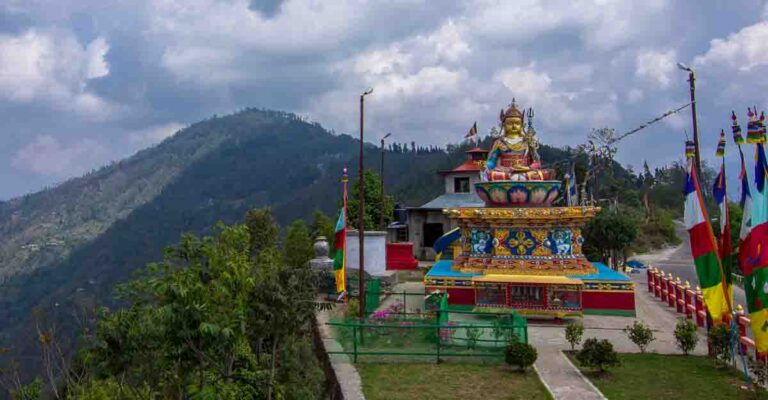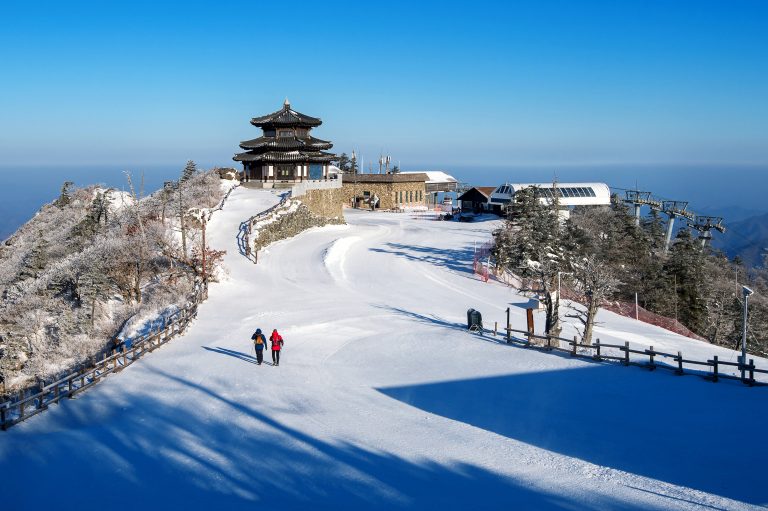Top 10 Tourist Attractions In Sikkim
Introduction.
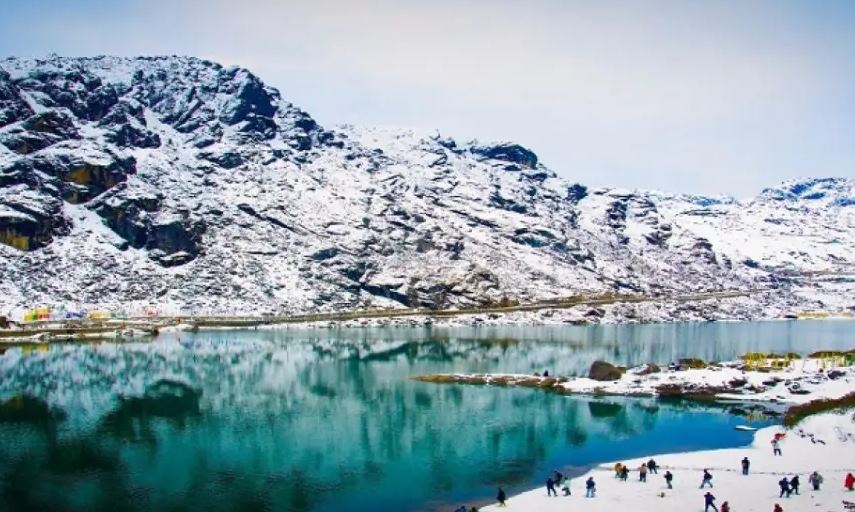
Cuddled up amidst the lofty snow-laden Himalayas, Sikkim is no less than a paradise on earth. This tiny territory is packed with sky-high mountains, lush vegetation, vibrant meadows, tranquil landscapes, resilient people and their equally dynamic culture and lifestyle.
Even after being landlocked with its sister states, Sikkim has uninterrupted accessibility through road, rail, and air that allows travellers to visit this tiny mountainous state at any time of the year.
In case you haven’t already explored the beauty of this little magnificent state, then you are truly missing out on something really beautiful. But then “How do I plan a trip?”, “What are the places worth visiting?”, and similar thoughts start to circle around your head.
Well, you no longer need to worry. Because we are now stepping in to help you out with this list of top ten beautiful tourist attractions for you to explore in Sikkim!
Top 10 Tourist Attractions In Sikkim
1. Gangtok

Having been known for being the capital city of the state of Sikkim, Gangtok is an epitome of modernity, cultural exchange, extraordinary nature, and serenity. Whether you want to catch a glimpse of the majestic Kanchenjunga, soak yourself in the sweet fragrance of the freshly bloomed rhododendrons, and witness the heap of cotton-like clouds engulfing the whole region, or feel the thrill of experiencing every kind of adventurous activity, Gangtok has something for everyone. And that’s a good enough reason to title this place one of the most beautiful hill stations in the country.
The city houses a plethora of mind-blowing tourist attractions, such as the Rumtek monastery, Enchey Monastery, Do Drul Chorten, Ganesh Tok, MG Marg, and Tashi viewpoint.
In addition to that, the city organizes the International Flower Festival in The month of May every year, where you can witness a wide range of exotic, seasonal, and local flowers such as rhododendrons, and alpine creepers, orchids, roses, and many others.
Although the city does not have an airport, the whole place is easily accessible by its nearest Bagdogra airport in West Bengal which is around 135 km away from Gangtok.
2. Nathula Pass
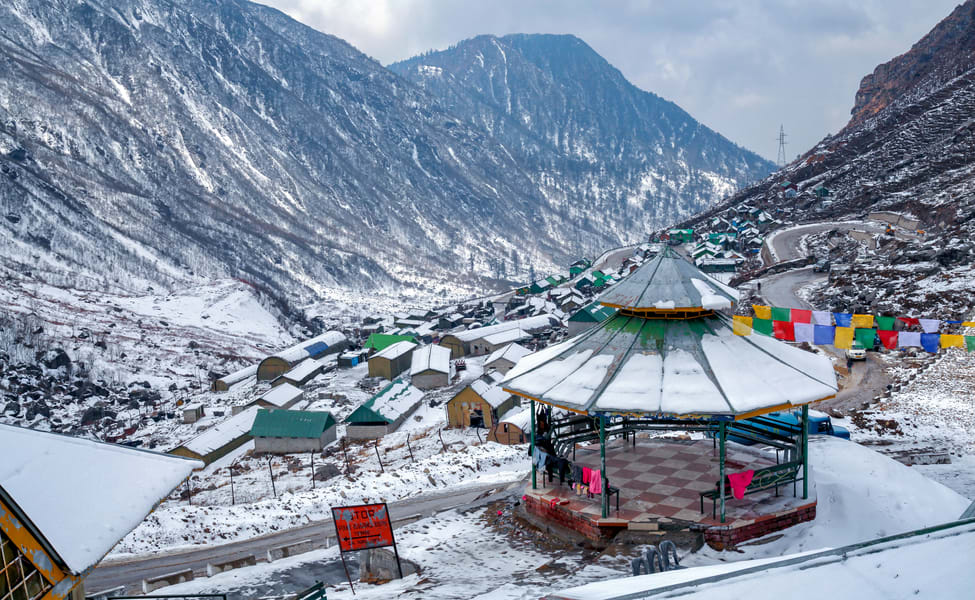
Driving aimlessly upon the zig-zag roads amidst the snow-covered mountains is an experience worth cherishing, especially when the route we are envisioning is similar to NathuLa. Having been described as one of the must-visit places in Sikkim, Nathu La used to be a part of the historic ‘Silk Route’ which linked the plains of India to Lhasa in Tibet. This connection plays a major role in maintaining a cordial relationship between the two regions. Sherathang is an important border trade market that is situated in this region. From here you can buy a few tokens that are symbolic of the Indo-Tibetan cultural exchange.
Seated at an altitude of 4310m above sea level, this pass is renowned for being one of the highest motorable passes in the world. However, you as a resident of India must possess a special permit from the tourism department of India for visiting this pass.
Nathula Pass is geographically located almost 53 kilometres away from the capital city of Gangtok and is well connected to the nearby towns through sleek highways. Besides having a few popular tourist attractions near and around the pass, such as the Menmecho lake, Kyongnosla Alpine Sanctuary, and Baba Harbhajan Singh Memorial Temple, Nathula offers a spectacular view of the Chumbi valley in Tibet amidst the snow-clad Himalayas.
3. Tsomgo Lake
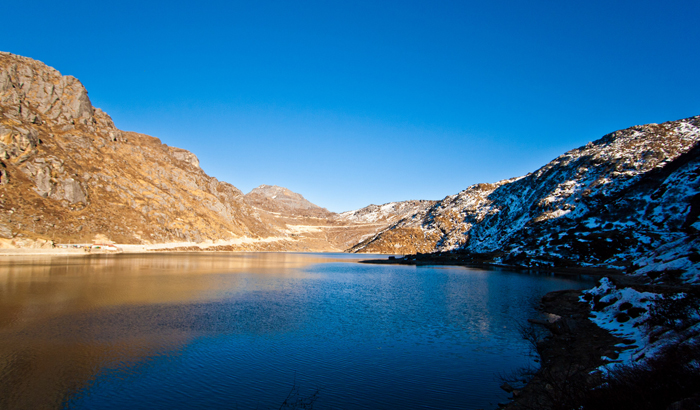
Seated cosily amidst the snow-laden mountains, the glacial lake of Tsomgo Lake is considered one of the must-visit places in Sikkim. Having been literally described as the “source of water”, Tsomgo indeed receives all its water through the glaciers that surround it.
Situated at an elevation of around 3753 meters above sea level, this pristine lake is named one of the highest located lakes in India. Just like any other freshwater lake, Tsomgo boasts of having crystal clear water in its bosom which brilliantly reflects the heavenly sky amidst the snow-covered mountains like a mirror. The lake freezes up completely during the cold months of winter. However, in order to experience that, you must possess a special permit from the tourism department of Sikkim.
In addition to these enthralling views, the vicinity of Tsomgo lake is home to a wide range of flora and fauna such as blue and yellow poppies, primulas, iris, migratory ducks, Himalayan yaks and ponies, and a lot more.
The period between January to March is considered to be the best time to witness snow. During this time, visitors indulge themselves in a series of thrilling activities such as skating on the thick sheet of ice, trekking along the bank of the lake, or even riding on Himalayan yaks.
On the other hand, the months of early summer and autumn are perfect to catch a glimpse of the blossoming Orchids and Rhododendrons. Visitors usually experience the sight of a multitude of exotic flowers and vegetation that grows around the lake.
You can check out Best Tour Operators In Gangtok
Moreover, October proves to be the perfect time to spot a variety of native birds in that region.
In addition to that, local people believe that Tsomgo lake is very sacred. That’s why they perform the annual worship of Guru Poornima at this lake.
Since the lake is located around two hours away from the capital city of Gangtok, travellers tend to take a day trip and return back on the same day. Moreover, frequent landslides, heavy downpours and snowfall can tend to make those winding roads even more dangerous to travel.
4. Pelling

Due to its favourable climate and comparatively smoother geography, travellers consider Pelling to be the next most preferred place to visit in Sikkim after Gangtok. This picturesque town is a dream destination for nature lovers, bird watchers, adventure freaks, and peace seekers.
Complete with vast meadows, ancient temples and monasteries, steep bridges, and intricate architecture, Pelling is home to a number of magnificent waterfalls, such as the Kanchenjunga fall, Changey Waterfall, and the Rimbi Waterfall. Another highlight of Pelling lies in its breathtaking clear vistas of the Kanchenjunga range from its foothills.
In addition to these natural attractions, the historical significance of monasteries like the Sanga Choeling and the Pemayangtse Monastery gives the heritage-loving travellers yet another reason to visit this gem of a town.
Since Pelling is situated at an elevation of 2150 meters above sea level, it receives a fair amount of snowfall in the winter. As a result, the winter months are too chilly. Apart from that, the climate usually remains moderate throughout the year. Therefore tourists can visit Pelling at any time, especially in the summer months of May to July.
Pelling is situated at a distance of around 74 km from Darjeeling and 131 km from Gangtok, which makes it easily accessible from both cities. In order to reach Pelling, you can board a bus or private car from the nearest Bagdogra Airport in Siliguri, West Bengal.
5. Zuluk

It is not always necessary to chase around locations with utmost popularity in order to get mesmerized, because even the offbeat destinations can take your breath away. And Zuluk fits this description perfectly. Complete with the fascinating views of towering mountains all around, Zuluk can serve you with its pristine beauty irrespective of any season.
Zuluk is home to several tourist attractions, such as the Thambi viewpoint, Zuluk wildlife area, Menmecho Lake, Kalapokhri Lake, Kupup Lake, Nathang Valley, Nag Temple, Old Baba Mandir, Lungthung, and a lot more. The enchanting view of the snow-covered Mt. Kanchenjunga from the Thambi View Point is just the cherry on top.
The pathway leading to this scenic little village is regarded as one of the best mountainous drives in the country. However, you must make sure that you take all the necessary precautions while traversing the zig-zag roads.
The period between August to September and January to April is considered to be the best time to visit Zuluk. But, you must have a special permit to visit and stay in this hamlet. Since there are no hotels, you have to adjust yourself and stay with the locals in the homestays.
6. Kanchenjunga Base Camp
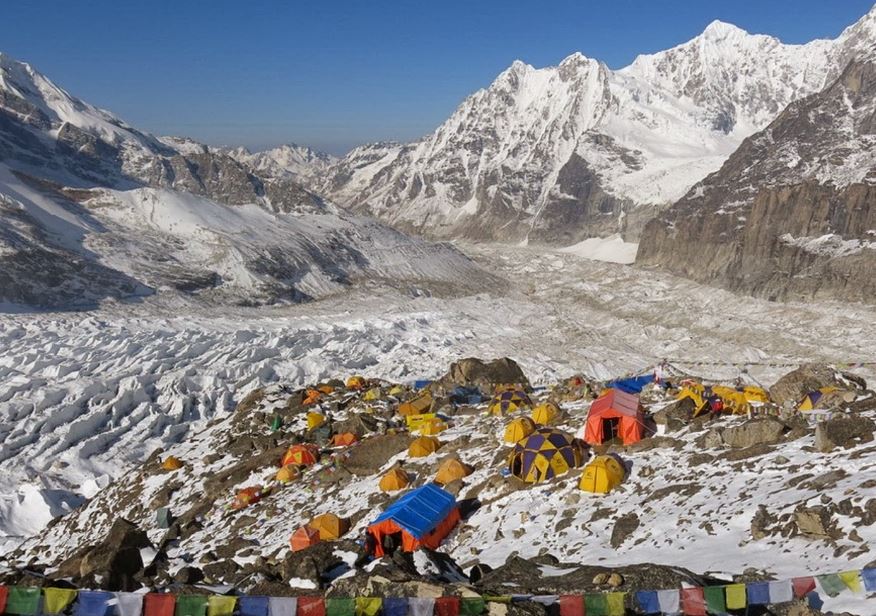
What’s the point of visiting Sikkim if you don’t experience the majestic Himalayas after an adventurous trek? Well, of course, you can catch a glimpse of the glorious Kanchenjunga from the balcony of your resort. However, relishing the same with supreme clarity from the Kanchenjunga Base Camp, which is close to the Indo-China border, is like taking the thrill to a whole ‘another level!
Kanchenjunga is known for being the third highest peak in the world, so reaching its foothill is something that will make you feel victorious, especially if you are an adventure-lover. After starting the trail from Dzongri, the entire journey will take you to an elevation of around 14000 ft above sea level. The period between April to June and mid-September to October is considered the best time to carry forward with this adventure.
7. Yumthang Valley
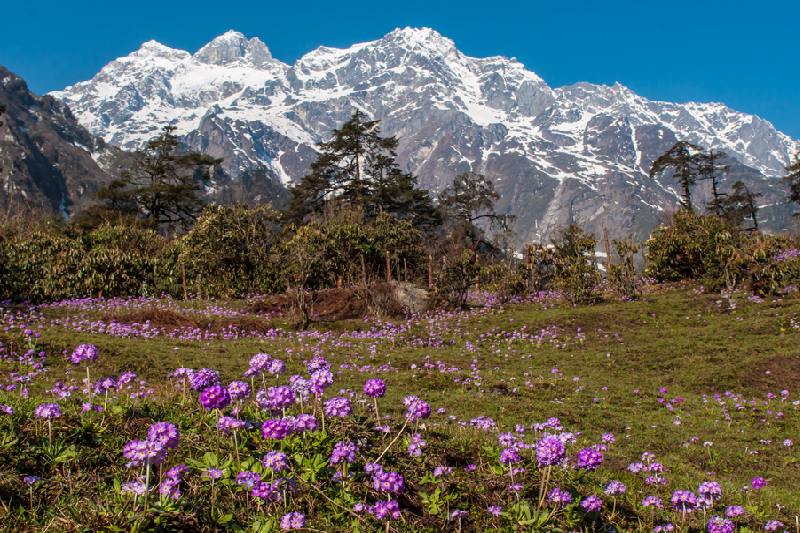
In case you haven’t ever been blown away by the beauty of the inflorescent meadows amidst the soaring mountains with a brook streaming close by, then you must visit the magnificent Yumthang Valley at least once in your lifetime. Situated at an elevation of 11693 ft, this scenic valley of flowers is known for being one of the best tourist attractions in Sikkim.
The locals celebrate the Losar festival every year from late February to March, right when the flowers start to blossom and carpet the valley in its alluring splendor. You can spot a multitude of exotic flowers such as cobra-lilies, cinquefoils, rhododendrons, louseworts, primrose, and many more.
The period between April to mid-June is considered to be the best time to visit. Whereas, the valley remains closed due to heavy snowfall during the months of December to March.
However, make sure that you carry all the necessary documents along with a couple of passport-size photos to obtain your special permit since that is required for your entry to the valley. Plus, keep sufficient cash with you to roam around freely.
8. Gurudongmar Lake
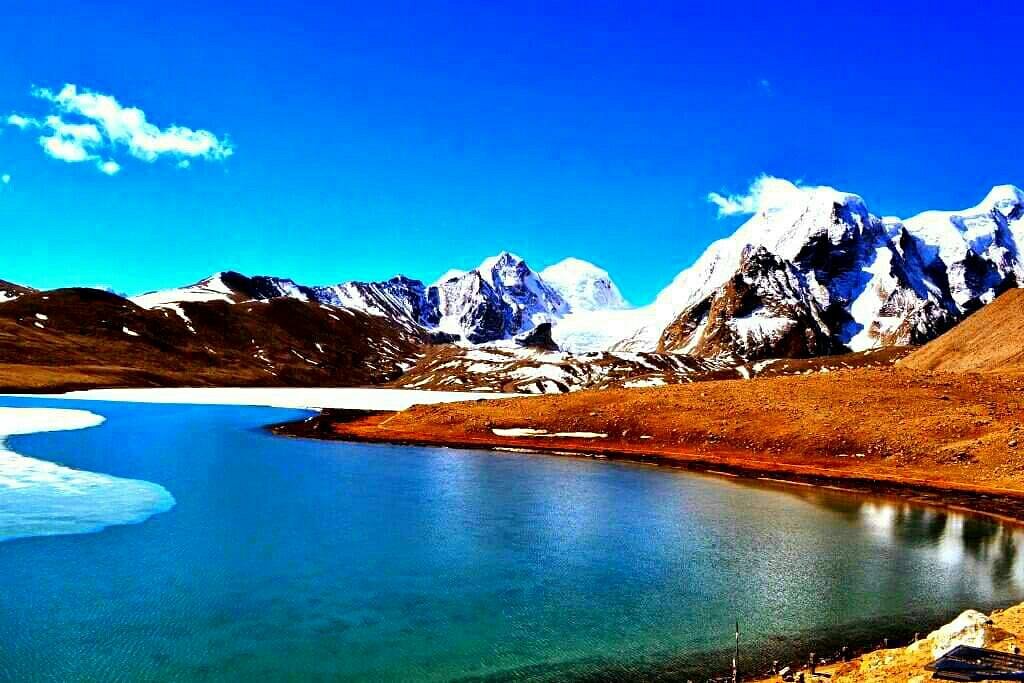
Situated at an elevation of 17800ft, Gurudongmar Lake is renowned for being one of the highest fresh-water lakes in the world. This gorgeous lake is nestled amidst the snow-clad mountains which give it an enchanting yet serene look.
April, early May, October and November are considered to be the most favourable months to visit this lake. Due to its setting and elevation, the water of the lake gets completely frozen during winter, whereas it mirrors the heavenly blue hues of the endless sky during summers.
But in order to envision this beauty, you have to fetch permits since the lake is very close to the Chinese-Tibetan border. Plus, you must carry sufficient winter clothes and medicines to combat issues caused due to cold and high altitude.
9. Lachung

Situated at the height of 8900ft in the northernmost part of Sikkim, Lachung can be the perfect destination for you due to its immaculate natural beauty. This scenic mountain village is known for its sky-high mountains, cascading waterfalls, and streaming glacial rivers, notably the Lachung River. And, the presence of bountiful orchards is yet another reason why Lachung is one of the most popular tourist destinations in Sikkim.
Despite all these, heavy rainfall during the monsoon and snowstorms during the winter make Lachung highly inaccessible. Moreover, the poor condition of the roads may dampen your excitement in normal weather conditions as well.
10. Ravangla
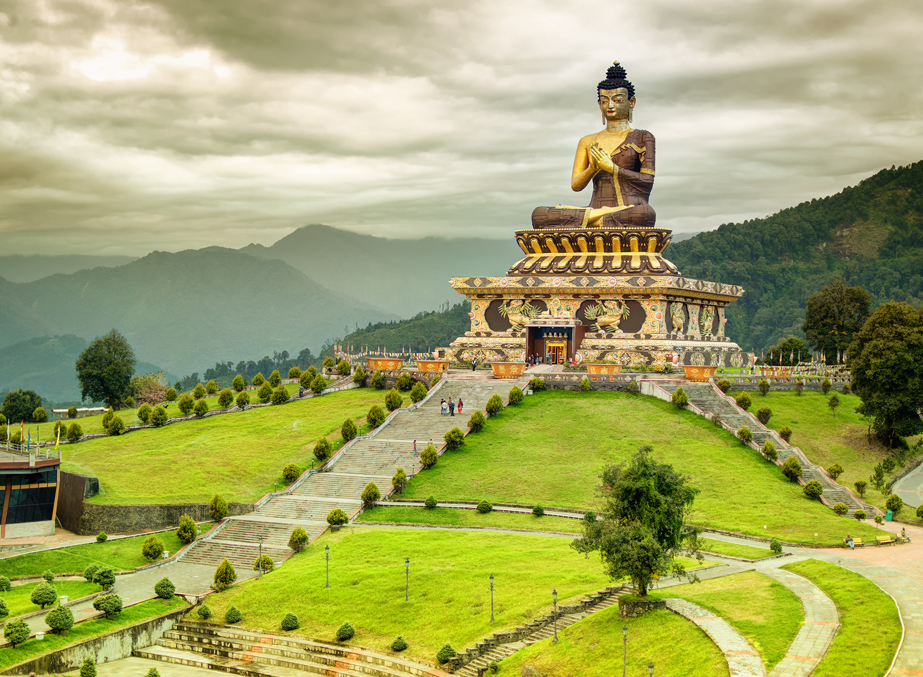
Ravangla is a quaint little town in South Sikkim that is comfortably placed amidst the hills of Tendong and Maenam. Situated at an elevation of around 8000ft, the town geographically lies between Gangtok and Pelling and is well connected to other major towns through highways.
The scenic town of Ravangla is known for its snow-clad mountains, cascading waterfalls, lush tea plantations, ancient temples and monasteries, intrinsic culture, and thrilling adventurous activities.
This hill-town is also renowned among nature lovers and bird-watchers for housing some of the rarest and exotic species of flora and fauna in the world. You can catch a glimpse of a variety of exotic birds, notably blue whistling thrush, babblers, cuckoos, dark-throated thrush, verditer flycatchers, and more.
April and May are considered the best time to visit this place since you can see the flowers in full bloom.
Long Story Short…
How Sikkim, despite being one of the smallest states in the country, is home to a multitude of marvellous locations is beyond our imagination! Even though it is tough to choose only the top ten tourist attractions, we have made sure to include the best destinations out of the rest.
Now that you are aware of a handful of really amazing destinations in Sikkim, what are you waiting for?
Frequently Asked Questions
Ans. Anytime other than the monsoon is considered to be a proper time to visit Sikkim, especially from March to June and the period between October and December.
Ans. Since Sikkim shares its boundaries with Bhutan, China, and Nepal, visitors require a special permit for security reasons.
Ans. Even though there are multiple religious sites present in Sikkim, some of the most famous sites include Rumtek Monastery, Ganesh Tok, Siddheshwara Dham, etc.


